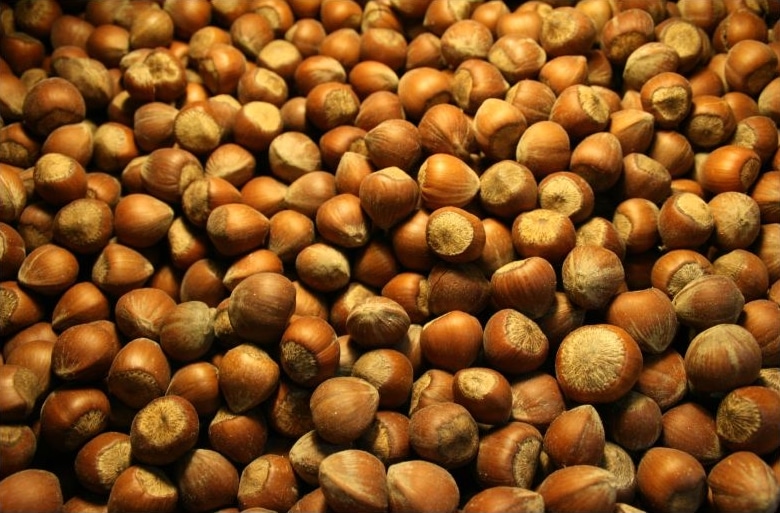Chestnut:
What is it?, history, cultivation, nutritional value, uses, recipes, and more...
The chestnut is a dried fruit with a high content of vitamins (B6 and thiamine), selenium, proteins, and minerals. It contains calcium, phosphorus, and magnesium, which promote the development and health of the skeletal system, and is a source of vitamin B6 and B1, which contribute to the proper functioning of the nervous system.
Índice
- 1 Chestnut: What is it?, history, cultivation, nutritional value, uses, recipes, and more...
What is the Chestnut?
The chestnut is a tree from the Lecythidaceae family, native to South America, specifically found in the Amazon rainforest of Bolivia, Brazil, southeastern Colombia, Guyana, Peru, and southern Venezuela. Its seeds are edible and go by various names, such as Brazilian nut, Brazil nut, Brazil nutlet, Amazon nut, Bolivian nut, Para nut, or mountain chestnut, among others.
The tree that produces chestnuts is the only species in the Bertholletia genus, and it is found scattered or in groups of up to 100 specimens, growing on well-drained soils in the vast forests of the Amazon, Negro, and Orinoco river basins.
Bertholletia excelsa is a large tree, reaching heights of 50 meters (160 feet) and possessing a trunk diameter of 1 to 2 meters (3 feet 3 inches to 6 feet 7 inches), making it one of the largest trees in the Amazon rainforest. It has an average lifespan of around 500 years and can often live up to a thousand years. In the Peruvian Amazon, trees up to 1200 years old have been discovered. Its trunk is straight, with smooth grayish bark. It typically lacks branches for more than half its height but displays a large crown of long branches above the canopy of surrounding trees. The leaves are dry, deciduous, alternate, simple, oblong, measuring 20 to 35 cm (8 to 14 inches) in length and 10 to 15 cm (4 to 6 inches) in width. The flowers are small, greenish-white, in panicles measuring 5 to 10 cm (2 to 4 inches) in length. Each flower consists of a caducous calyx with two parts, six unequal cream-colored petals, and a large number of stamens fused into a wide hood-like mass.
A very interesting fact is that its flowers can only be pollinated by insects strong enough to overcome its robust ligules and access the pollen and nectar they produce. Therefore, bees like Eulaema mocsaryi and Xylocopa frontalis are the main pollinators of this plant (Motta Maués 2002; Cavalcante et al. 2012). Other floral visitors include Xylocopa aurulenta, Epicharis rustica, E. affinis, Centris similis, Eulaema nigrita, E. cingulata, Bombus brevivillus, and B. transversalis (Motta Maués, 2002).
The fruits containing the chestnuts are rounded in shape, have smooth skin, a size similar to a coconut, and weigh around 2 kg. When mature, they fall to the ground, and inside each fruit, up to 20 nuts can be found. Each nut has a crescent shape, a thin skin covering it similar to almonds, and the interior is white, buttery, and very flavorful.
History of the Chestnut
The history of the chestnut is largely unknown until the 18th century when geographer and naturalist Alexander Von Humboldt and Ran Plain introduced and named it in honor of the French chemist L.C. Berthollet.

Common Name of the Chestnut
| Spanish | “Castaña”, “Castaña del Brasil”, “Nuez del Brasil”. |
| Portugues | “Castanheira”, “Castanha-do-Brasil”, “Castanha do Pará”. Nuez de Brasil, Nueces de Brasi, Coquito de Brasi, Nuez de la Amazonía, Nuez del Pará, Castaña amazónica, Castaña del Brasil, Árbol de la castaña. Nombre científico o latino: Bertholletia excelsa Familia: Lecythidaceae. Origen: cuenca del Amazonas. |
Scientific Name of the Chestnut
Chenopodium pallidicaule
Taxonomy of the Chestnut
| Kingdom | Plantae |
| Subkingdom | Tracheobionta |
| Division | Magnoliophyta |
| Class | Magnoliopsida |
| Subclass | Dilleniidae |
| Order | Ericales |
| Family | Lecythidaceae |
| Subfamily | Lecythidoideae |
| Tribu | Chenopodieae |
| Gender | Bertholletia |
| Specie | Bertholletia excelsa |
Synonyms of the Chestnut
Barthollesia excelsa Silva Manso, orth. var.
Bertholletia nobilis Miers
Etymology of the Chestnut
The term “Bertholletia” was coined by Alexander von Humboldt in honor of his friend, Count Claude Louis Berthollet (Talloires, December 9, 1748 – Arcueil, November 6, 1822), a French chemist and scientist. The specific designation “excelsa” derives from “eccelso,” meaning possessing superior qualities.
Cultivation, Distribution, and Habitat of the Chestnut
- Habitat
- Distribution
- Cultivation
Habitat of the Chestnut
The CHESTNUT is a species native to the non-floodable high forests of the Peruvian, Brazilian, and Bolivian Amazon, although it can also be found in the wild in the Colombian and Venezuelan jungles.
In Peru, the densest chestnut stands are located in the border areas with Bolivia and Brazil, specifically in the department of Madre de Dios.
The CHESTNUT thrives best under tropical climates with average temperatures between 24.3 and 27.2 °C (75.7 and 81.0 °F), annual rainfall ranging from 1,400 to 2,800 mm (55.1 to 110.2 inches), an annual relative humidity in the range of 79 to 91%, and an annual total of sunlight hours ranging from 2,000 to 2,500 hours. This tree requires ample sunlight for its growth and fertile soils with high organic matter content and good drainage.
An interesting fact about the chestnut is that, to this day, it has not been successfully domesticated. Therefore, its production mainly comes from wild plants, and the fruits are harvested only after they have fallen to the ground.
During the chestnut harvesting period, thousands of gatherers and their families move to forested areas, leading to considerable ecological balance repercussions.
Furthermore, the absence of the hymenopteran insect that pollinates it, an insect exclusively suited to the forest environment, makes it impossible to fertilize the flowers. As a result, the production of these fruits outside their original areas is not feasible.
While Brazil nuts or chestnuts have been harvested in plantations, the yield is low, and currently, it is not economically viable.
The chestnut fruit takes 14 months to mature after the pollination of the flowers. The fruit itself is a large capsule, 10 to 15 cm (4 to 6 inches) in diameter, similar in shape to a coconut, and weighing up to 2 kg (4 lb 7 oz). It has a hard, woody shell 8 to 12 mm thick, containing eight to 24 wedge-shaped seeds, measuring 4 to 5 cm (1.6 to 2.0 inches) in length.
Distribution of the chestnut
The chestnut is a tree native to South America, primarily found in the Amazon rainforest. It is specifically native to countries such as Brazil, Bolivia, Colombia, Guyana, Peru, and Venezuela. This tree belongs to the family Lecythidaceae and is known scientifically as Bertholletia excelsa. It thrives in the non-floodable high forests of the Amazon basin, particularly along the river basins of the Amazon, Negro, and Orinoco rivers. The chestnut tree can grow to impressive heights of up to 50 meters (160 feet) and has a diameter of 1 to 2 meters (3 feet 3 inches to 6 feet 7 inches). It plays a vital role in the biodiversity of these lush rainforest ecosystems and serves as a valuable source of nourishment and livelihood for local communities.
Cultivation of chestnuts
Chestnut cultivation is primarily focused in the high forests of the Amazon rainforest region. The tree, known as Bertholletia excelsa, thrives in tropical climates with average temperatures ranging from 24.3 to 27.2°C. It requires annual precipitation between 1,400 and 2,800 mm and thrives in humidity levels of 79 to 91%. These trees need plenty of sunlight for optimal growth and prefer fertile soils with high organic content and good drainage.
Interestingly, chestnut trees have not been successfully domesticated. Therefore, the majority of production comes from wild trees, and the fruits are harvested only after they have fallen to the ground. The unique ecosystem of the Amazon rainforest plays a crucial role in the growth and reproduction of chestnut trees. Additionally, the absence of the specific wild insect necessary for pollination makes it difficult to cultivate chestnuts outside their original habitat. The fruits take about 14 months to mature after the flowers are pollinated, resulting in large capsules containing multiple wedge-shaped seeds. Despite its challenges, chestnut cultivation is a significant economic activity in certain regions, providing livelihoods for many local communities.
Geographical Distribution of Chestnuts

Madre de Dios
Seasonal Availability of Chestnuts
- January, February, March, April, December
Nutritional Value of Chestnuts
Chestnuts, also known as Brazil nuts, are extraordinary sources of proteins and important sources of energy. They are highly sought after for their high content of vitamin E, polyunsaturated fatty acids, and, above all, their high selenium content. Selenium is a mineral with potent antioxidant functions that combat free radicals, which contribute to aging and various health conditions. Additionally, it has anti-tumoral, antiviral, and immune-stimulating effects. To put into perspective how nutritious this nut is, consuming just 2 chestnuts already fulfills the daily recommended intake of 200 micrograms of selenium.
Furthermore, chestnuts are low in sodium and high in potassium, contributing to stable blood pressure and normal functioning of the nervous and muscular systems. They are also a good source of vitamin B6, which helps reduce tiredness and fatigue.
Chestnuts have high levels of proteins and essential amino acids, making them ideal for individuals with nutritional deficiencies, as well as energizing supplements for athletes or those engaging in physical exercise.
From these nuts, an oil rich in unsaturated fats is extracted, beneficial for those with cholesterol problems. It provides Vitamin C, provitamin A, Vitamin B1, and B2; along with minerals such as Calcium, Phosphorus, and Iron.
Chestnuts are also considered “fat-burning” foods, as they create an immediate sensation of fullness, curbing excessive food intake.
Health Benefits of Chestnuts
Chestnuts boast elevated levels of selenium, polyunsaturated fatty acids, vitamin E, and proteins.
Contraindications or Side Effects
Despite their undeniable nutritional virtues, chestnuts should be consumed with caution, as excessive consumption can be detrimental to health. This is especially true for children, the elderly, pregnant women, individuals with gastric or digestive issues, and those allergic to such nuts.
Consuming chestnut seeds during pregnancy and the subsequent lactation period is discouraged, as it can significantly increase the likelihood of the baby developing asthma in the future.
Ingesting chestnuts is also not advisable for individuals undergoing weight loss treatments or taking medication to combat obesity. The interaction of the seed’s components with this medication can be harmful.
It’s also necessary to consider that the shell of this seed contains high concentrations of aflatoxins, a substance that can be so toxic that it acts as a stimulant in cases of liver cancer.
Excessive amounts of selenium in this food, when consumed excessively, can lead to hair loss and brittle, fragile nails. It can also affect the central nervous system, resulting in tissue and nerve deterioration in the brain.
Other concerning effects related to excessive selenium consumption include: irritation, lethargy, exhaustion, dizziness, emotional imbalance, tingling, decreased sensitivity in extremities, tremors, seizures, shivering, imperceptible blood pressure, and in exceptional cases, loss of consciousness and death.
Perhaps the most concerning contraindication related to excessive consumption is radiation. Brazil nut trees are enormous and possess deep roots that can absorb radiation, storing it in very internal and deep layers of the soil. It has been discovered that chestnuts emit more than 6,600 pCi / kilogram of radiation.
It’s clear that this food possesses many positive nutritional qualities, as well as several health alerts, so it should be consumed in moderation.
| 10 Porciones por Kilogramo | |
| Tamaño de porción | 100g |
| Cantidad por porción Calorías |
646 |
| Cantidad por 100g | |
| Energía | 2,702 kJ |
| Grasa Total | 69.0 g |
| Sodio | 22 mg |
| Carbohidratos totales | 8.4 g |
| Carbohidratos disponibles | 3.7 g |
| Fibra Dietaria | 4.7 g |
| Proteínas | 15.4 g |
| Calcio | 144 mg |
| Fósforo | 630 mg |
| Zinc | 4.06 mg |
| Hierro | 2.10 mg |
| Potasio | 467 mg |
| Agua | 3.9 g |
| Cenizas | 3.4 g |
| Vitamina A | 0 μg |
| Tiamina (B1) | 0.75 mg |
| Riboflavina (B2) | 0.17 mg |
| Niacina (B3) | 1.48 mg |
| Vitamina C | 2.70 mg |
| Acido Fólico (B9) | ● |
| β-Caroteno | ● |
| Fuente: Tablas peruanas de composición de alimentos – Centro Nacional de Alimentación y Nutrición – Ministerio de Salud – Perú | |
Derived Products and Methods of Consuming Chestnuts
Uses of Chestnuts
Chestnuts have been used in gastronomy for a long time, shining due to their varied nutritional properties. In recent times, they have also begun to be marketed as supplements, high-quality wood, and even as ingredients in cosmetic products.
- Culinary
- Medicinal
- Industrial
- Ritual
Culinary Use of Chestnuts
Chestnuts have a high nutritional value due to the proteins and essential amino acids they contain. They can be consumed raw, roasted, or used as an ingredient in a wide variety of desserts, cookies, cakes, ice creams, and recipes.
In addition to chestnut oil, it's also common to make chestnut milk from crushed fresh seeds. This milk is used in regional dishes and is even applied to treat skin blemishes.
Another culinary use of chestnuts is the flour obtained from dehydrated seeds. This flour is protein-rich and can be combined with wheat flour to make bread. It can also be used in preparing balanced feed for livestock.
Chestnuts are often mixed with chocolate in the preparation of desserts and snacks. Their coconut-like flavor makes them suitable for culinary pairing with cocoa.
Medicinal Use of Chestnuts
The boiled bark of chestnut is used to make infusions that combat liver diseases, act as an anti-rheumatic, anti-inflammatory, and anti-hypertensive remedy.
The oil rich in unsaturated fats obtained from this plant also reduces cholesterol levels in the blood.
In the Brazilian Amazon, it is common to use the tree's bark to make a tea that treats liver discomfort and other ailments.
Industrial Use of Chestnuts
Chestnuts are used in the woodworking industry for furniture manufacturing and pressed wood production. The trunk's bark is utilized to fill the boards of the bottoms, sides, and decks of boats, as well as for mat manufacturing.
They are also harnessed by the cosmetic industry, as their oil is used in the production of cosmetics, shampoos, conditioners, and fine soaps.
Furthermore, chestnut oil serves as a lubricant in watches, in paint manufacturing, and as an abrasive for polishing materials like metals and ceramics (using the nut's shell).
Ritual Use of Chestnuts
Chestnuts have historical significance in ritual and ceremonial practices. They were employed in various cultural contexts as offerings to different deities. These rituals often involved using chestnuts as symbols of abundance, fertility, and connection with nature. The ritual use of chestnuts highlights their role beyond culinary and medicinal domains, showcasing their spiritual and symbolic importance in diverse cultures.



